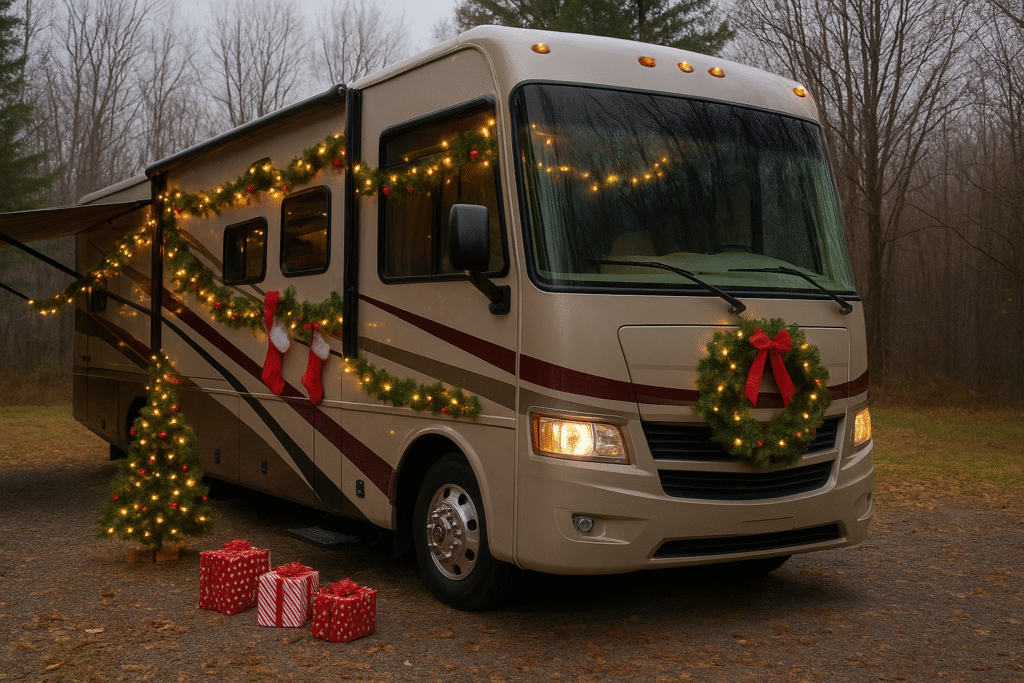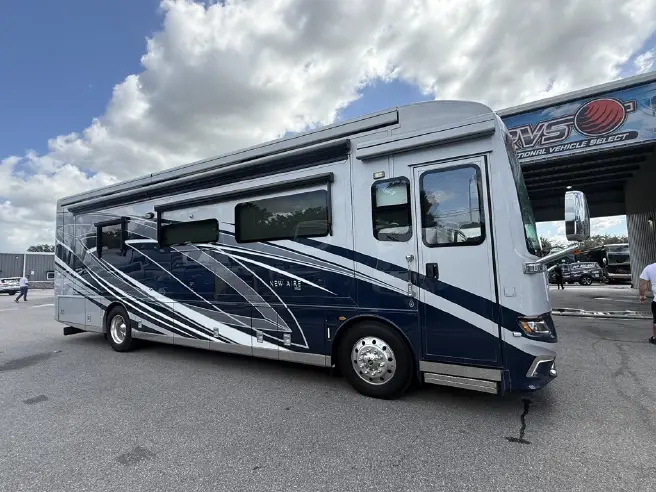Winterizing Your RV – On the Road
If you’re a Southern native, you’re used to warm autumns and winters that allow you to finally break out the occasional scarf or pair of boots. But if you’re from the South and also an RV enthusiast, you may hit the road in all seasons and need to keep your rig calibrated to the weather in places around the country. If you decide to head out on the open road this winter instead of allowing your RV to hibernate, be sure your vehicle is equipped for cold weather (hot cocoa, anyone?) as well as the necessary emergency gear.
- Outfitting your rig with snow tires is essential when traveling in the winter months. The tires on your RV when you bought it are most likely summer tires or highway tires, which make for a smooth, quiet drive. However, these will prove inefficient if you get caught in a storm or on icy roads.
- Cover windows and doors with insulated fabric and/or weather stripping to ensure energy efficiency and comfortable temperatures inside your RV. Walk your RV front to back, top to bottom, to check for other areas that may be unnecessarily letting in cold air.
- Consider skirting your RV if you plan on being in cold weather. Skirting is the installation of flaps made of heavy-duty vinyl around the exterior base of your RV to prevent heat loss and help to stabilize your vehicle in the event of strong winter winds. However, be sure to do research on the proper panel sizes and fasteners that are specific to your class of RV.
- Having the option of an extra heat source in your RV is essential if you plan on exploring winter wonderlands such as the New England area or the Midwest. Space heaters work well, though these use a relatively large amount of energy and can become expensive over time. A propane heater is also a good, less expensive option but it requires a vent and should be installed by a professional.
Winterizing Your RV – Time to Hibernate
If you’ve spent the spring, summer and autumn on the open road and you plan on letting your rig rest it out for the remainder of the year, prepping it for winter is a must. Below are five important tips for winterizing your RV so that she’s in good shape and ready to go once the season rolls around again.
- Draining the plumbing system is one of the most important things to do before retiring your RV for the winter. If remaining water in pipes or tanks freezes, this could cause cracking, leaking and other damage to your RV that will be tedious and expensive to repair. Most RV maintenance shops offer this service but you can also do it yourself by using a hand pump or an air compressor and antifreeze.
- Leveling your RV is important during the winter months when your vehicle is in storage. Leveling jacks not only keep it stable when you are inside the vehicle moving around, but they help to lessen and evenly distribute the pressure on the tires even so that you don’t find you have flat spots come spring.
- Inside the RV, be sure to do a thorough cleaning of the kitchen area, countertops and bathroom. Remove all food from the cabinets and refrigerator before powering down, as well as removing batteries and valuables like small electronics. Strip beds of linens and store in a dry place after washing. Prevent moisture damage and mold by using a disposable moisture and odor absorber.




